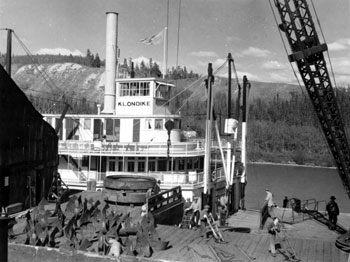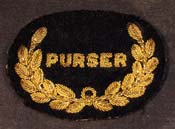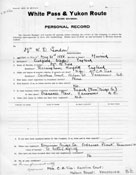        |  |
                 | |
|
Uncertain & unsettled
|
||||||||||||
 |
|||||||||||||
 |
|||||||||||||
|
Whitehorse
The Tidds had passed through the city during trips in and out of the territory before the Second World War. They had made the mandatory dog team patrol to the city from Ross River recounted in Mary’s letters of the 1920s and Claude had spent time in its hospital while recovering from a toxic goiter. However, the couple didn’t attempt to settle in Whitehorse for any length of time until the Second World War, when Claude landed a job as a steamship purser with the White Pass and Yukon Route.
The distant conflict had a tremendous immediate impact on the city. Fearing an attack on Alaska from the Japanese, the Americans began construction of a highway to carry supplies up through northern British Columbia across the Yukon and into Alaska. American troops and construction workers showed up en masse and took up temporary residence in the formerly quiet town for the building of the Alaska Highway and the Canol Pipeline. Among the effects of this influx was a housing shortage, which appears to have resulted in a crisis for the Tidds. Crowded into the WP&YR’s Wasson House, which Mary may have helped to manage, the couple endured a frustrating lack of privacy. This was due, in part, to the many engineers and military officers living there. When the Tidds were passed over for a company house of their own, Mary sank into one of her depressions.
“I told Claude that I simply couldn’t go on without any prospect of a change in sight,” Mary confessed to her mother in April 1944. By mid summer, that change was in sight. “The work of getting settled at Crow will be ‘duck soup’ in comparison to the wear and tear of this past year.”
The Tidds were finally getting their chance to live in Old Crow on the Porcupine River. Mary’s letters give the impression that they left Whitehorse under a cloud of disappointment and disapproval from Claude’s employers. However, she looked forward to Old Crow with enthusiasm, optimism and hope.
|
|||||||||||||
 |
Vancouver | Slideshow |  |


